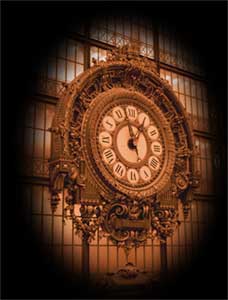SECOND LOOK : photography and digital media
Visual Arts
Building Main Gallery, University of Texas at Dallas
March 19 - April 15, 2004
opening reception: March 19, 2004, 6:30 - 9:00 pm
curated by Marilyn Waligore
Terri Cummings
Michael Henderson
Kathy Lovas
Martin Menocal
James Paster
Tony Shipp
honored speaker Eve Sonneman, artist, photographer, painter
lecture: March 31, 2004, 7:30 pm, Performance Hall
|
EVE SONNEMAN LECTURE
Artist Eve Sonneman will present a lecture, "Reflections On The Diptych," at
7:30 pm, March 31, 2004, in conjunction with the exhibition "Second
Look." As honored speaker she will talk about her own work, and will
consider the importance of serial photography within a larger historical
context. Eve Sonneman is viewed as an innovator through her work with photographic
diptychs in the 1970s that challenge the concept of the "decisive moment," as
documented by photo-historians Jonathan Green and Naomi Rosenblum. New York
artist Eve Sonneman is represented in the permanent collections of the Museum
of Modern Art, the Metropolitan Museum of Art, the Centre Pompidou, Paris,
the Art Institute of Chicago, and the Museum of Fine Arts Houston, in addition
to 30 museums worldwide. A photographer of international renown, she has
participated in the 1977 Documenta and in the biennales of Venice, Paris,
Strasbourg, and Australia, has published five books, and has been the subject
of 77 solo exhibitions. Her recent delicate abstract oil paintings and watercolors
continue her explorations of light and color. Her paintings, as critic William
Jeffett has stated, "ask us to suspend directed modes of thought.
At the same time, they are never totally removed from the artist's understanding
of photography as disengaged vision." |
SECOND LOOK EXHIBITION
Second Look, curated by Associate Professor Marilyn Waligore, explores references
to time--such as duration, series, sequence, and the potential of narrative--in
photography and digital media. Texas artists participating in the exhibition
include Kathy Lovas and Martin Menocal of Dallas, Terri Cummings of Fort
Worth, and Huntsville area artists James Paster, Michael Henderson, and
Tony Shipp.
Second look is an exhibition that explores references to time in photography
and digital media. Media processes influence our perception of time
as in the instantaneous snapshot, or conversely, the long exposure.
In new media,
setting the frame rate may stretch or compress the experience of continuous
time. The film loop presents an image cycle that repeats endlessly,
with a duration that is boundless. Martin Menocal and Tony Shipp rely
on connections
between serial photography and film; Menocal's photographic prints
of film strips and Shipp's zoetrope sculptures both recall the 19th
century Studies
of Animal Locomotion created by Eadweard Muybridge. Jim Paster's compulsive
rephotography of Robert Capa's Death of the Loyalist Soldier revisits
the effect of the processes of reproduction upon the aura of the work
of art.
Here, in the context of the series, camera-based imagery calls us to
take a second look at a moment.
Examining the still shot or film clip attests to our fascination with
technologys ability to dissect linear time into discrete units. Photographic
experiments
of the 1970s informed by systemic art have influenced subsequent
work with image progression. The camera lens records the staging of
events
that unfold
over time, creating a narrative. Kathy Lovas and Terri Cummings experiment
with photographs placed in installation environments to invite viewer
interaction. Here photographs of disparate events are brought together,
fostering a narrative
generated by the viewer's movement through space. Visual and conceptual
contrasts and correspondences guide the formation of the image sequence.
Multiple monitors
juxtapose moving images that invite contemplation in Michael Henderson's
fusions of 3D animation and video. Given the proliferation of images
arranged in new combinations, we must reconsider photography's status
as solitary,
still image and review its influence upon and reaction to new media.
|
